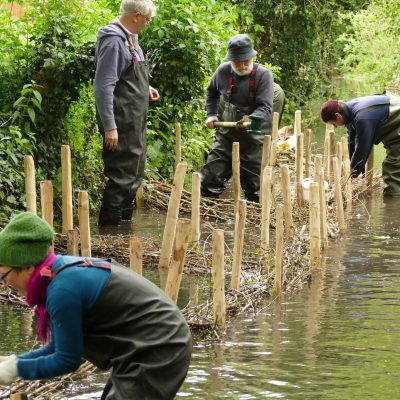Don’t Delay: sign the petition and write today to the Secretary of State – we know that Cleve Hill is now being actively considered by staff in the Ministry
There are many reasons to object to the proposed Cleve Hill Solar Power station – the short paragraphs below are for you to pick and choose and adapt to make your case to the Secretary of State.
Please sign our petition to say NO to a massive, dangerous, dirty Solar Power Plant with the world’s largest batteries close to homes http://chng.it/r2S9PKTxZN
Please encourage friends and relatives to sign too; this project will set a national precedent.
Ensure that it is clear that you are objecting: if you are emailing put objection or objecting in the subject line. If you are writing, head your letter OBJECTION.
Please email the Rt Hon Alok Sharma, Secretary.State@beis.gov.uk and copy Helen.Whately.mp@parliament.uk, who is supporting our campaign and CH@FavershamSociety.org
The postal address is: The Rt Hon Alok Sharma, Secretary of State for Business, Energy and Industrial Strategy, 1 Victoria Street, London SW1H 0ET
COPY AND PASTE FORM THE TEXT BELOW IF YOU WISH
I am objecting to the proposed Cleve Hill Solar Power Station for the following reasons:
- I have seen the letter sent to you by Dr Alastair Gould, Senior Partner at Newton Place Surgery on behalf of the whole practice. I share his concerns about the fire risks associated with lithium-ion batteries and the toxicity of hydrogen fluoride. The proposed batteries are untried and untested at this scale, and I note that Arizona, where there have been serious fires, has stopped the use of this technology. I urge you to think very carefully about your responsibility for approving a development based on emerging, untested and potentially very hazardous technology. This is dirty solar, and the proposal should be rejected.
- The sheer scale of the development with nearly one million panels the height of a London double-decker bus, 200,000 steel piles over an area the size of Faversham will industrialise a natural landscape of considerable value for recreation, tourism, and wildlife.
- The site sustains thousands of migrating birds and is recognised as providing essential feeding and nesting ground for many threatened species, including Brent geese, reed-buntings, nesting skylarks, and marsh harriers. It is recognised by RSPB and Kent Wildlife Trust as providing important connectivity and habitat between the sites already protected.
- I am concerned about the impact of the increased traffic thundering past the local primary school for two years, causing pollution and disturbance in addition to the road accident risk. There will be up to 80 heavy goods vehicles per day thundering past Graveney School within metres of the school playground. That is one lorry every 6 minutes during construction, and there will be many traffic movements associated with site maintenance when construction is finished.
Please sign our online petition. This a national precedent so please encourage relatives, friends and colleagues to sign to object. http://chng.it/r2S9PKTxZN
It is also important that large numbers of emails and letters of objection are received by the Secretary of State – the email or letter merely needs to record your objection
The Faversham Society strongly supports renewable energy and regrets that the new housing being built around Faversham has no provision for solar or wind power, nor have ground source heat pumps been installed. Renewable energy systems are best installed during initial construction, it is much more expensive if they have to be retrofitted.
Solar Power should be low cost, safe, low carbon and clean, but the Cleve Hill power station will be none of those things. w cost, safe, low carbon and clean, but the Cleve Hill power station will be none of those things.
Solar power generation can and should be low cost, safe and low carbon in exactly the way the developers claim but will not achieve in this case. In the case of Cleve Hill, the benefits of low-carbon electricity generation would come at a very high price. The bottom line is that it is a dirty solar project that would give renewable energy a bad name.
- Costs: the environmental and opportunity costs of the Cleve Hill project will be anything but low. The main opportunity cost relates to the Environment Agency’s original plan to allow Graveney Marshes to revert to salt marsh within the next 20 years. That plan has been postponed by at least 40 years as a result of the solar power station project, along with all the environmental benefits (including carbon sequestration, provision of nutrients to marine wildlife, etc.) that reversion to salt marsh would have brought. It is not clear either whether the developers have budgeted for the very significant costs of strengthening sea defences against rising sea levels, which are conservatively predicted to increase by 0.5m or within the 40-year life of the solar power station. The developers have downplayed too the huge volume of HGV construction traffic on small country roads that will plague the local community during the 2-3 year construction phase of the power station, potential negative impacts on wildlife, the loss of amenity for local residents and increasing numbers of visitors to Kent, as well as the very substantial cost of decommissioning and cleaning up the site at the end of its life.
- Safety: the risks associated with the Cleve Hill project are so great that the site may be impossible to insure. In particular, there is growing evidence that large lithium-ion battery storage systems constitute a major fire risk, with respected energy and financial sector commentators noting that fires linked to lithium-ion batteries are now occurring with troubling frequency with the result that the industry’s understanding of the technology’s safety has been upended in recent months. Additional safety risks are posed by the failure of the would-be developers to take seriously the threat of terrorist attack. During the 2019 Planning Inspectorate hearings, the only security measure they proposed was the installation of CCTV cameras, failing entirely to mention the requirement for nationally significant infrastructure projects to conduct — and implement the recommendations of — a full Security Considerations Assessment.
- Carbon emissions: the carbon emissions associated with 2-3 years of HGV movements during the construction phase of the project will be very significant. Construction will involve the unnecessary use of hundreds of thousands of tonnes of concrete which is now recognised as a major source of CO2 emissions. Conversely, the project will prevent the carbon sequestration that would take place if the site were allowed to revert to salt marsh as originally planned by the Environment Agency. Further emissions would be caused by raising the existing seawall by the 0.5-1m that will be required if the project goes ahead but that would be unnecessary under reversion to salt marsh.
Register for The Faversham Society’s Newsletter which will give updates here
Faversham Society Blog posts regarding Cleve Hill
More on the environmental issues at savegraveneymarshes.org
Read Dr Alastair Gould’s terrifying letter regarding the possible dangers of this massive power station here
Read coverage in The Faversham Eye here

 Time is running out to protest against the proposal to build the massive Cleve Hill solar power development which will cover the marshes from Faversham Creek to Seasalter with solar panels the size of doubledecker buses on an area larger than Faversham itself.
Time is running out to protest against the proposal to build the massive Cleve Hill solar power development which will cover the marshes from Faversham Creek to Seasalter with solar panels the size of doubledecker buses on an area larger than Faversham itself.




